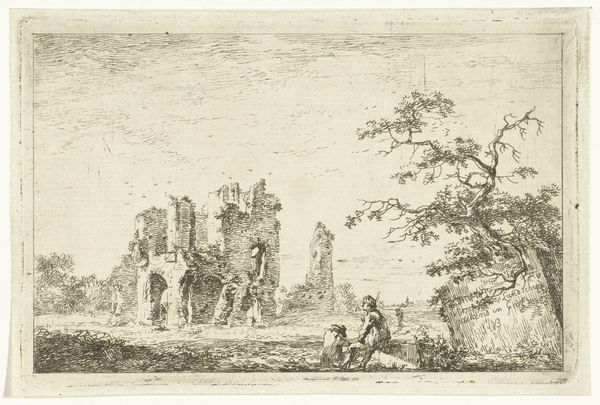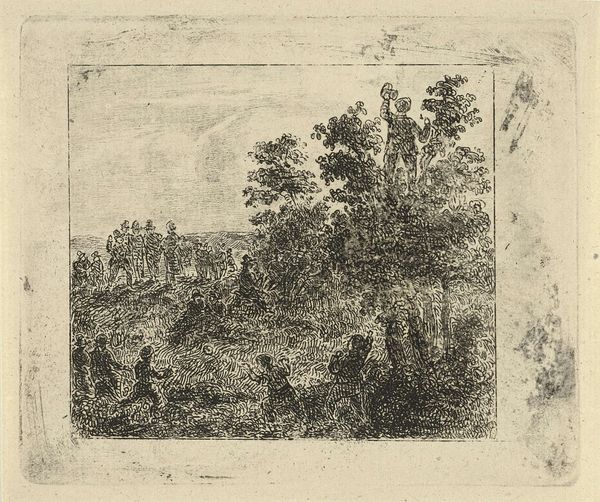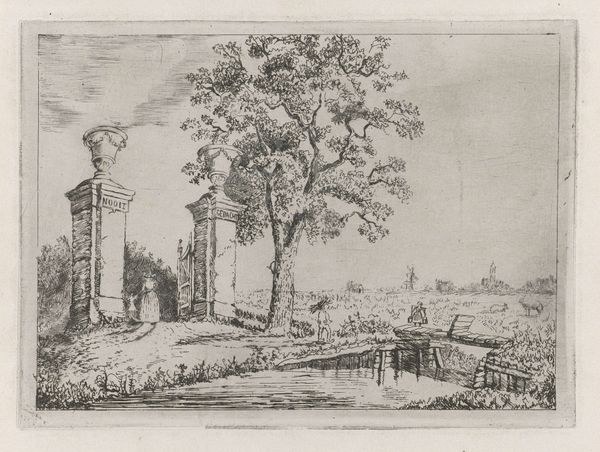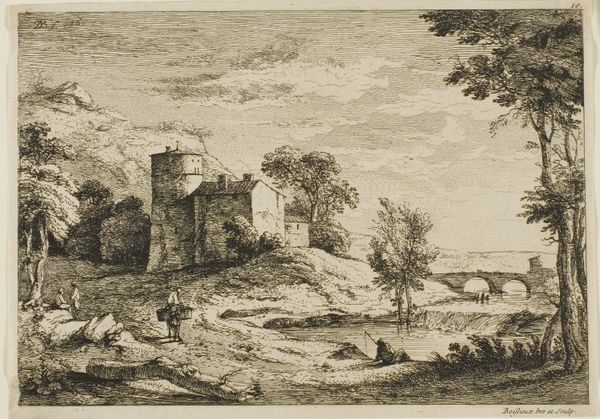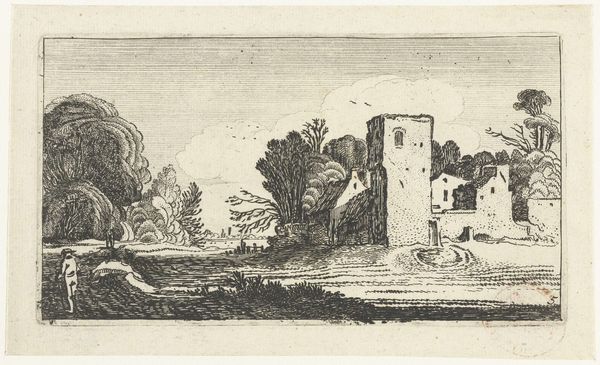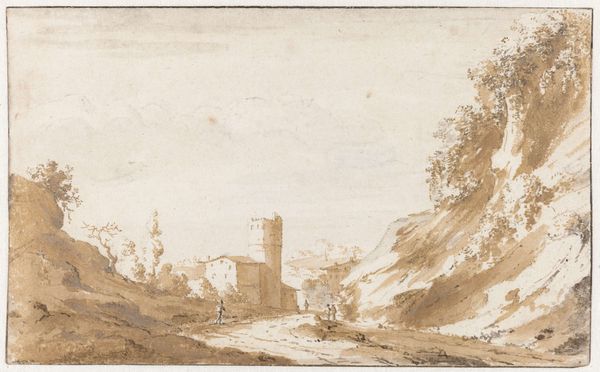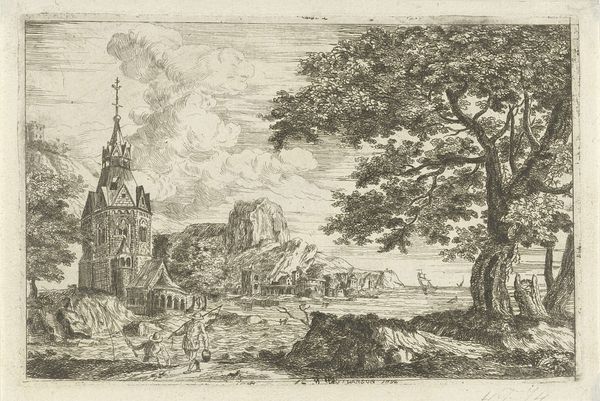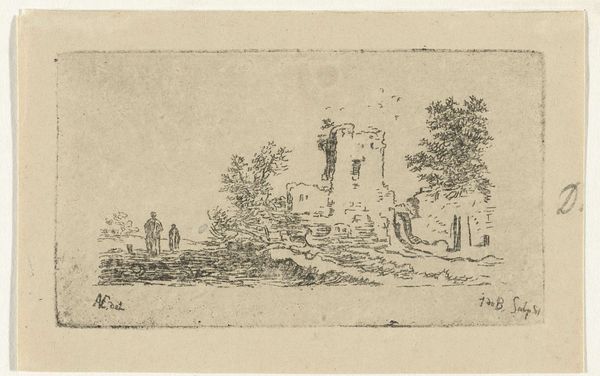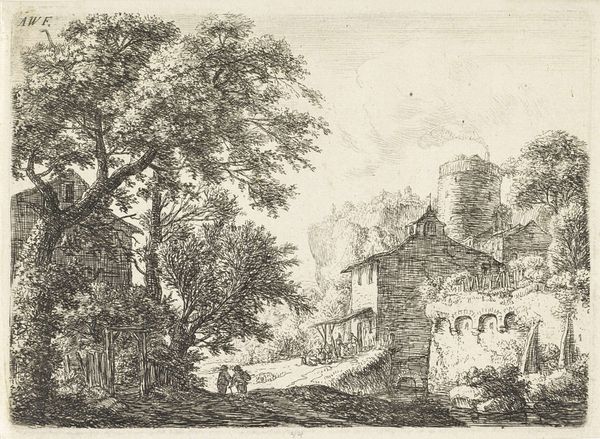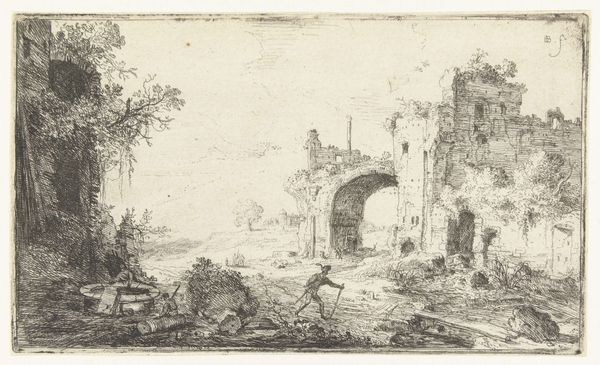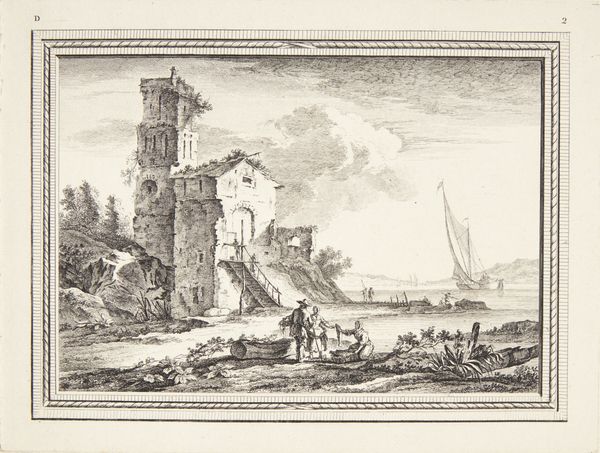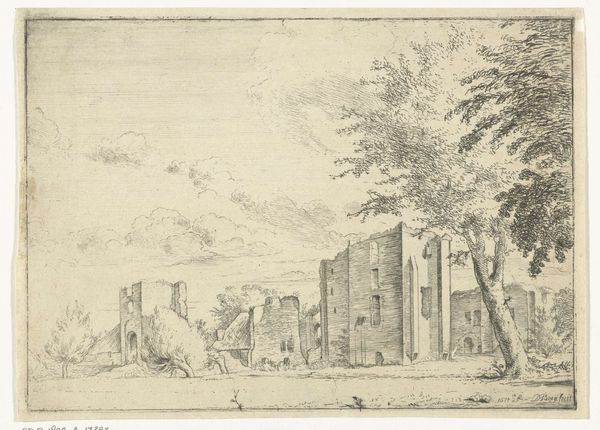
#
pen sketch
#
pencil sketch
#
personal sketchbook
#
sketchwork
#
pen-ink sketch
#
pen work
#
sketchbook drawing
#
sketchbook art
#
fantasy sketch
#
initial sketch
Dimensions: height 71 mm, width 126 mm
Copyright: Rijks Museum: Open Domain
Curator: Welcome. We are looking at "Landschap met ruïne van kasteel en twee figuren," or "Landscape with castle ruins and two figures," an etching created sometime between 1815 and 1867 by Willem Matthias Jan van Dielen. Editor: It has a haunted, ethereal feel. The trees are wispy, the castle crumbling… It’s a scene of decay, but also strangely peaceful. The light seems to come from everywhere and nowhere at once. Curator: I agree, the ruins themselves are a key motif in Romanticism, really emphasizing the transient nature of power and human creation against the backdrop of enduring nature. Van Dielen created it as part of his artistic exploration. It speaks to how landscapes reflect larger political shifts of the era, perhaps commenting on crumbling aristocratic power, since the rise of merchant power. Editor: The two figures walking toward the castle add to this reading. Are they hopeful, or simply naive? Do they represent us, strolling naively toward structures built on shaky foundations? The light and sketchy drawing style makes them ambiguous. Are we meant to feel hopeful that these buildings will be revitalized? Or mourn the fact that even solid things must pass with time? Curator: It’s fascinating that you pinpoint this socio-political anxiety. Remember, this piece likely originated during the restoration period in Europe, with reverberations of both pre-revolution ideals mixing with post-revolutionary sensibilities. The ruins represent this old order, but Van Dielen's style here— the way the figures almost fade into the environment, may question what is being rebuilt and whose stories will prevail. Editor: Exactly, even the use of etching reflects a kind of layering and scratching away. A deliberate deconstruction! The landscape itself appears porous, like a veil between visibility and invisibility. The decay almost gives the picture a strange potential. Curator: This gives an interesting vantage to its original viewer, whose context in those years makes him a likely candidate to consider the artist’s purposes within their social discourse. Considering both the artistic conventions and political landscape of the period helps unveil some very profound perspectives about social classes, institutions, legacy. Editor: A sketch that truly whispers across the ages. It makes you think not just about then, but also about the ruins we are creating today.
Comments
No comments
Be the first to comment and join the conversation on the ultimate creative platform.

